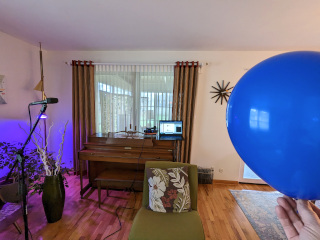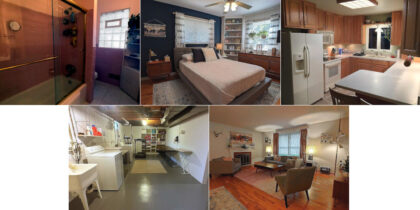 Many times in audio, we use digitally rendered room acoustics, or reverbs. Digital reverbs are great at cleanly creating large spaces such as concert halls and churches, but for the smaller spaces that we often need in commercials, it’s hard to beat Impulse Responses.
Many times in audio, we use digitally rendered room acoustics, or reverbs. Digital reverbs are great at cleanly creating large spaces such as concert halls and churches, but for the smaller spaces that we often need in commercials, it’s hard to beat Impulse Responses.
In a nutshell, an Impulse Response (IR) is an acoustic sample of a real space. You setup a speaker and a microphone and record a tone sweep of the room. By comparing the original tone with the recorded version, the program can derive the acoustics of the space. Another way to create an IR is by recording a loud impulse in the room. Often a starter pistol will be used, but a good kid-friendly substitution is a large balloon! You set up and record a stereo mic as you pop a balloon and voila, you have an Impulse Response!
There are many audio plugins that allow you to use the balloon-pop IR to recreate the sound of the original room in your audio project. I love IRs because they sound so realistic. Often an actor is recorded on a set, a kitchen for example, but later in the studio a line of copy may be changed to better explain the story. How do you make the studio recorded audio sound like it was recorded on set? If you said IRs, give yourself a pat on the back!
On a recent rare afternoon when I had the house all to myself, I recorded IRs of the following rooms: bathroom, bedroom, kitchen, laundry room and living room. While recording the pops, I also recorded my voice and then compared the IR on a my cleanly recorded voice to one recorded live in the room. The results were great. This is one of those fun projects that will pay dividends down the road as I use these IRs on future projects. It’s another way we go above and beyond to provide the best sound for our projects.
If you’re an audio professional who uses IRs, you are welcome to download the Coyle House 2023 IR pack. It’s free to use and includes the following images of the rooms if your plugin supports them.
